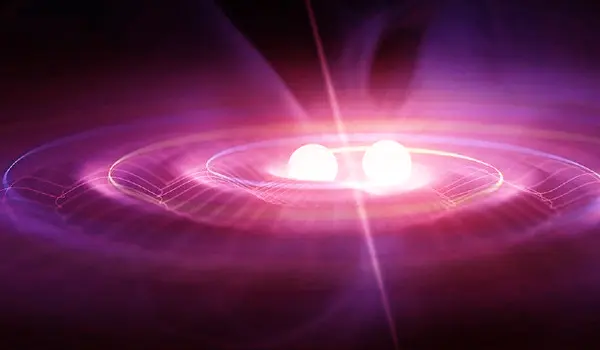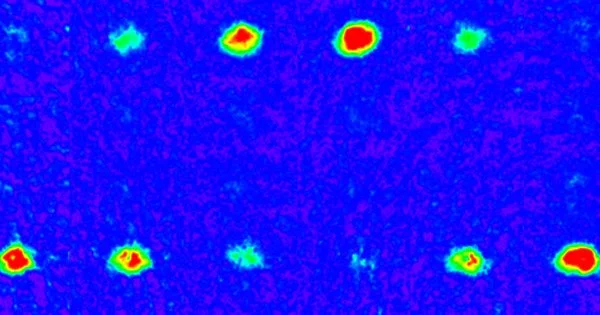A new approach has been devised that has the potential to help future instruments investigate fundamental science problems such as gravitational waves and dark matter. The concept is outlined in a paper produced by UK Quantum Technology Hub Sensors and Timing researchers at the University of Birmingham and published in Communications Physics, as well as a related patent application filed by the University of Birmingham Enterprise.
An optical cavity is a mirror setup that creates a standing wave cavity resonator for light waves. Optical cavities are an important part of lasers because they surround the gain medium and provide feedback of the laser light. They are also employed in optical parametric oscillators and some interferometers. Light enclosed within the cavity reflects several times, resulting in standing waves for specific resonance frequencies. The standing wave patterns produced are referred to as modes; longitudinal modes differ solely in frequency, but transverse modes differ in frequency and exhibit varied intensity patterns across the beam’s cross-section.
It suggests a novel approach for exploiting optical cavities to improve atom interferometers, which are very sensitive devices that employ light and atoms to achieve ultra-precise measurements. Although difficult to implement, the concept proposes a manner of overcoming significant technological hurdles associated in the quest of atom interferometers functioning at extreme momentum transfer – a technology that would allow atoms to be placed in a quantum superposition over long distances.
This optical cavity approach offers a route to achieving the enormous laser power requirements for future atom-based gravitational wave detectors. By eliminating some of the most severe present technological hurdles, this innovative technique has a real potential to achieve disruptive sensitivity levels in large-scale atom interferometers.
Dr. Rustin Nourshargh
This is critical for providing the sensitivity required for these devices to explore signals from dark matter and gravitational waves. Exploration of dark matter and detection of gravitational waves from the very early Universe is critical to expanding our collective understanding of fundamental physics.
The new paper, written by Dr. Rustin Nourshargh, Dr. Samuel Lellouch, and colleagues from the School of Physics and Astronomy, describes how synchronization of the input pulses, to realize a spatially resolved circulating pulse within the optical cavity, can facilitate a large momentum transfer without the need for drastic improvements in available laser power.
The enormous progress made in the manipulation of quantum systems is paving the way for the development of practical quantum-based technology. Notably, numerous unexpected manifestations of quantum physics are becoming key aspects for next-generation electronics, whose performance will outperform those of conventional machines. Atom interferometry is a prime example of this. According to quantum mechanics, particles can behave like waves, exhibiting interference just like light.

The focal lengths of the two mirrors and the space between them identify various resonator kinds. Because of the difficulties of aligning flat mirrors to the required precision, they are not commonly utilized. The geometry (resonator type) must be designed so that the beam remains stable, that is, the size of the beam does not increase with multiple reflections. Other conditions, such as having a minimal beam waist or no focus point (and thus intense light at that point) inside the cavity, are also met by resonator types.
Optical cavities are built with a high Q factor so that a beam can reflect many times with minimum attenuation. Therefore, the frequency line width of the beam is very small indeed compared to the frequency of the laser.
Investigating dark matter and gravitational waves will not only help us comprehend the history of the Universe, but it will also spark fresh ideas for boosting the future sensitivity of atom interferometers. This will also be relevant for furthering the use of atom interferometry in practical applications, such as offering new navigation capabilities by increasing GPS signal durability.
“This optical cavity approach offers a route to achieving the enormous laser power requirements for future atom-based gravitational wave detectors,” stated Dr. Rustin Nourshargh, former doctorate researcher at the University of Birmingham and now Scientist at Oxford Ionics.
“By eliminating some of the most severe present technological hurdles, this innovative technique has a real potential to achieve disruptive sensitivity levels in large-scale atom interferometers,” stated Dr. Samuel Lellouch, Research Fellow at the University of Birmingham.





